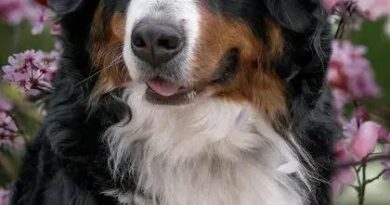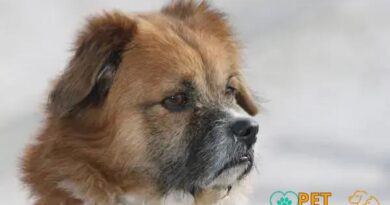Curiosities about the Pug: Uncovering Fascinating Facts and Traits
Pugs are one of the most beloved dog breeds, known for their distinctive features and charming personalities. In this post, we’ll dive into some interesting curiosities about the Pug, including their unique physical traits, historical origins, and behavioral characteristics. Whether you’re a Pug owner or just curious about this adorable breed, you’ll find these facts fascinating!
The Unique Physical Traits of Pugs
Pugs have a distinctive appearance that sets them apart from other dog breeds. Their short, wrinkled muzzles are one of their most defining features and are often described as “smushed” faces. This gives them a charming, expressive look. Another key trait is their big, round eyes that seem almost too large for their small faces. These eyes often convey a sense of curiosity and personality.
Additionally, pugs have a compact, muscular body with a curly tail that typically twists tightly over their back. Their coat is short and smooth, commonly found in colors like fawn or black. Pugs also exhibit deep wrinkles on their forehead, which many believe add to their expressive faces. These wrinkles require regular cleaning to avoid skin infections.
Their ears can come in two distinct shapes: the “button ear,” which folds forward, and the “rose ear,” which folds back. Over time, pug breeders have preferred the button ear, as it gives the pug a very alert and adorable appearance.
Sturdy and Playful Build
Pugs might be small in stature, standing about 10-13 inches tall and weighing between 14-18 pounds, but they are quite sturdy. They have a solid, square build that adds to their robust appearance. Despite their small size, they are known for their playful and lively nature.
Historical Background of the Pug Breed
The Pug breed has a rich history that traces back over 2,000 years. Originating in China during the Han Dynasty, these small dogs were favored by royalty and nobility. Chinese emperors kept them as companion animals, and they were often given luxurious treatment.
Pugs were brought to Europe in the 16th century by Dutch traders who named them Mopshond. They became popular among European nobility, including William of Orange, who helped popularize the breed in England after he brought his own Pugs to Britain during the Glorious Revolution.
By the 18th century, Pugs had captivated the hearts of many, including Queen Victoria, who played a significant role in promoting the breed. The breed standard as we know it today was established during this time. Pugs have consistently maintained their status as beloved companions, cherished for their unique appearance and affectionate nature.
Over the centuries, Pugs have also been depicted in various artworks, reflecting their esteemed status. Their popularity spread globally, making them one of the most recognizable and adored breeds around the world.
Pug Personality and Behavior
Pug Personality and Behavior
Pugs are known for their affectionate and friendly nature. They are often described as charming and even-tempered companions. This breed is particularly good with children and other pets, making them a wonderful addition to families.
One notable aspect of a Pug’s behavior is their loyalty to their human family. They tend to form strong bonds and are known to follow their owners around the house. Despite their small size, Pugs have a big personality and exhibit a playful and humorous side, often engaging in antics that amuse their families.
It is also worth mentioning that Pugs are quite intelligent, though they may have a stubborn streak. Consistent and positive reinforcement training works best with them. Their eagerness to please their owners often outweighs their stubbornness, making them trainable with patience and persistence.
Pugs thrive on human attention and do not enjoy being left alone for long periods. They can be prone to separation anxiety if not properly accustomed to alone time. It’s important to provide them with mental stimulation and interactive toys to keep them engaged.
In terms of social behavior, Pugs generally get along well with other dogs and pets. They are non-aggressive and enjoy social settings, whether it’s a walk in the park or a family gathering. Their friendly disposition often makes them the center of attention in any group.
One should also be aware of a Pug’s tendency to snore and wheeze due to their brachycephalic (short-nosed) structure. While this may be considered charming by some, it is a characteristic trait of the breed that potential owners should be prepared for.




